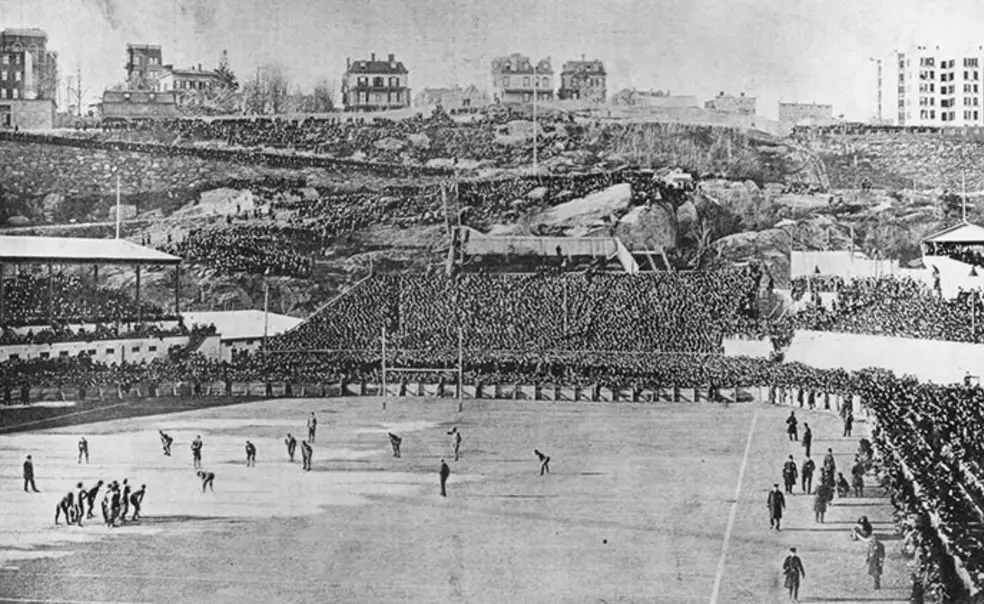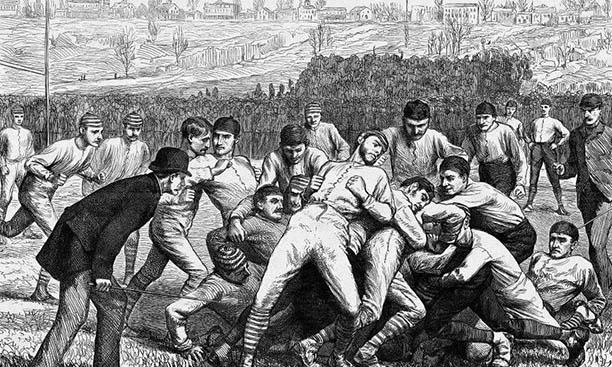Every Princetonian worth his or her Tiger stripes knows that Princeton played Rutgers in the first intercollegiate football game. The match took place Nov. 6, 1869, in New Brunswick, N.J. — Princeton lost.
Less known is the role that Princeton played in creating the winning tradition of Thanksgiving Day football, a tradition that is still going strong. In 1876, Princeton and Yale faced off in the intercollegiate championship game on Thanksgiving Day in Hoboken, N.J. The game moved to New York City a few years later.
The Princeton-Yale Thanksgiving Day game quickly became immensely popular. Richard Harding Davis, writing in Harper’s Weekly, said it didn’t matter whether New Yorkers could tell “a touchdown from a three-base hit.” They knew that “the Yales” and “the Princetons” were going to fight it out in New York, and they wanted to join in the fun even if they couldn’t afford to buy a ticket to the game.
As Thanksgiving Day approached, football mania took hold of the city. Churches moved the time of their Thanksgiving services up an hour to accommodate game-goers and fans; pastors didn’t want to risk preaching their Thanksgiving Day sermons to empty pews. At 10 a.m., a procession of horse-drawn carriages, omnibuses, and other vehicles — all decorated in the college colors — lined up on Fifth Avenue. As the caravan began its journey uptown to Manhattan Field in the Polo Grounds in Harlem, it passed sidewalks lined three or four deep with well-wishers shouting “rifle-like” cheers for Yale and “hissing sky-rocket” yells for Princeton, as Davis described it. The wealthy hung huge silk banners displaying gigantic Y’s or P’s outside their mansions, while the poor waved strips of colored cloth out their apartment windows.
Not everyone approved of Thanksgiving Day football. Even Davis, who had described the festivities with apparent delight in Harper’s Weekly, believed that New Yorkers’ obsession with football obscured the significance of the day. The holiday had become centered on “twenty-two very dirty and very earnest young men who are trying to force a leather ball over a whitewashed line.”
But the Princeton-Yale game in New York City was a catalyst for the creation of a popular audience for Thanksgiving Day football. In 1893, according to one count, 120,000 athletes played in 5,000 Thanksgiving Day games across the country, demonstrating an enthusiasm for the sport that stretched far beyond the Ivy League.
That year the faculties of Princeton and Yale announced their disapproval of the Thanksgiving Day football game in New York. This was an age when educators believed they had a responsibility to guide the moral development of the students in their care as well as their intellectual advancement. The professors objected to the hoopla over the game, which they thought distracted students from their studies, and they were appalled at students’ excessive behavior during the postgame revelries, which inevitably provoked drunken brawls that ended with Princetonians and Yalies being hauled off to jail.
The college authorities decreed that future championship games would be played on campus, where they could keep a better eye on the collegians and crack down on any shenanigans.
Melanie Kirkpatrick ’73 is the author of Thanksgiving: The Holiday at the Heart of the American Experience (Encounter Books), which was published in October.













No responses yet